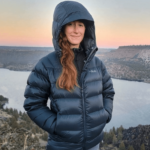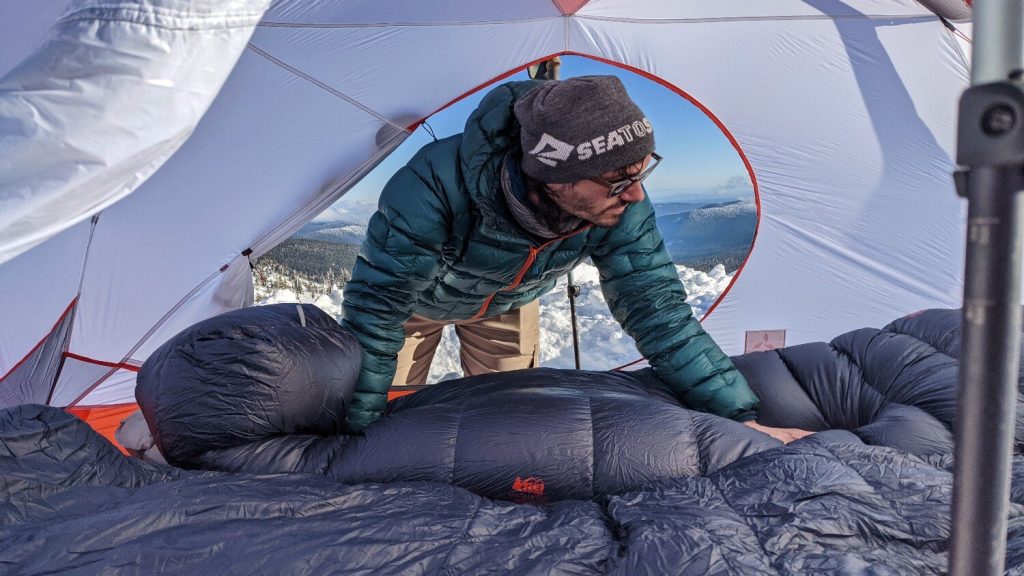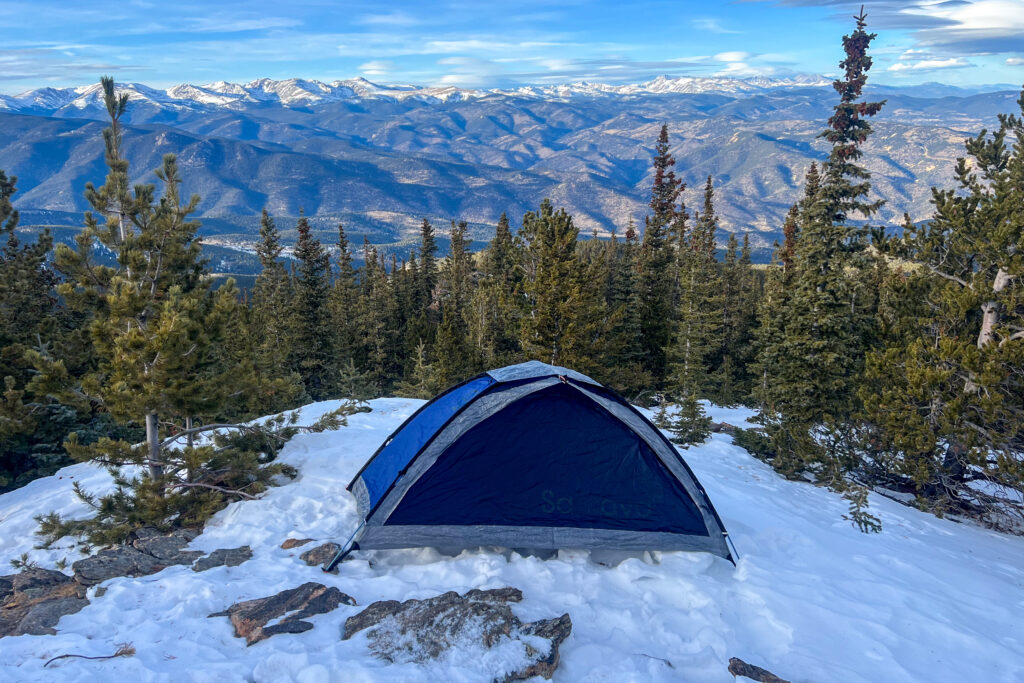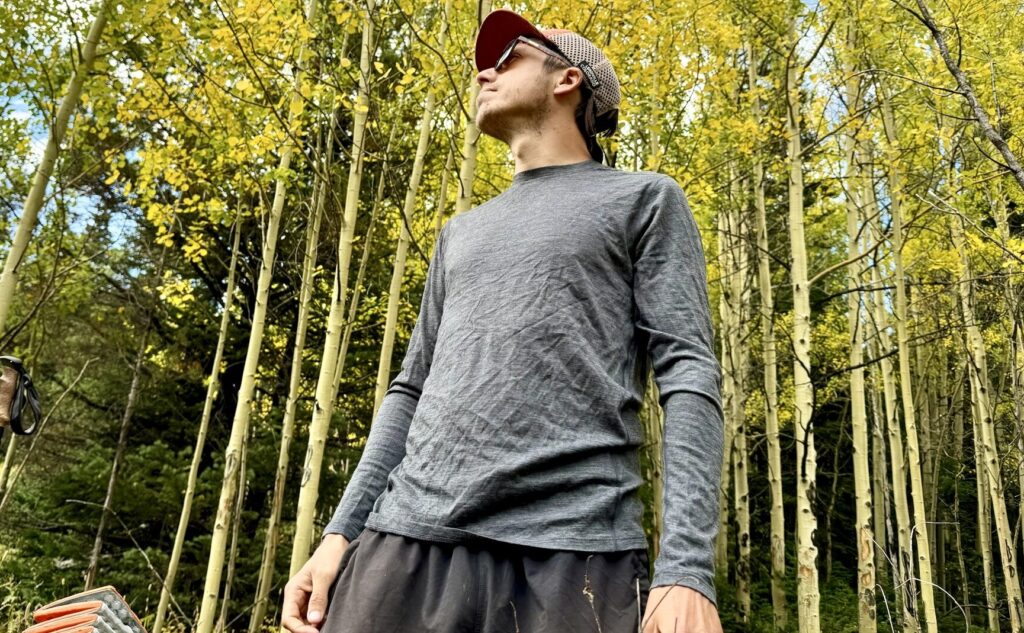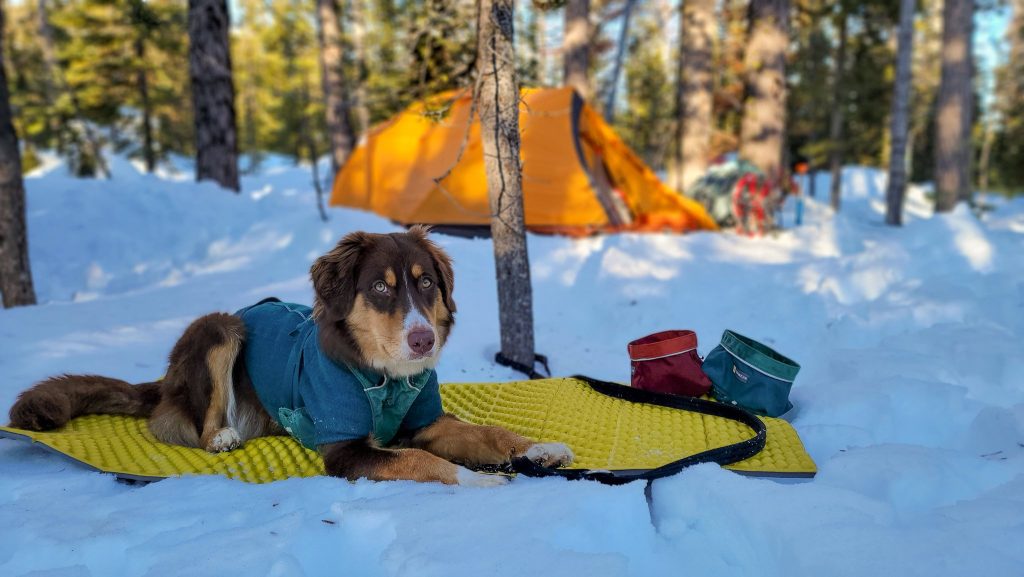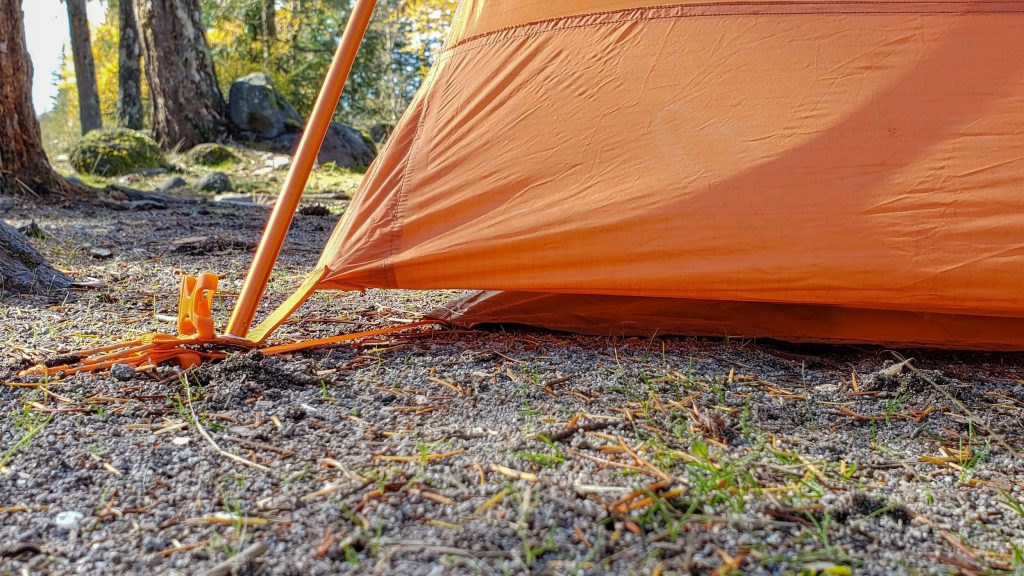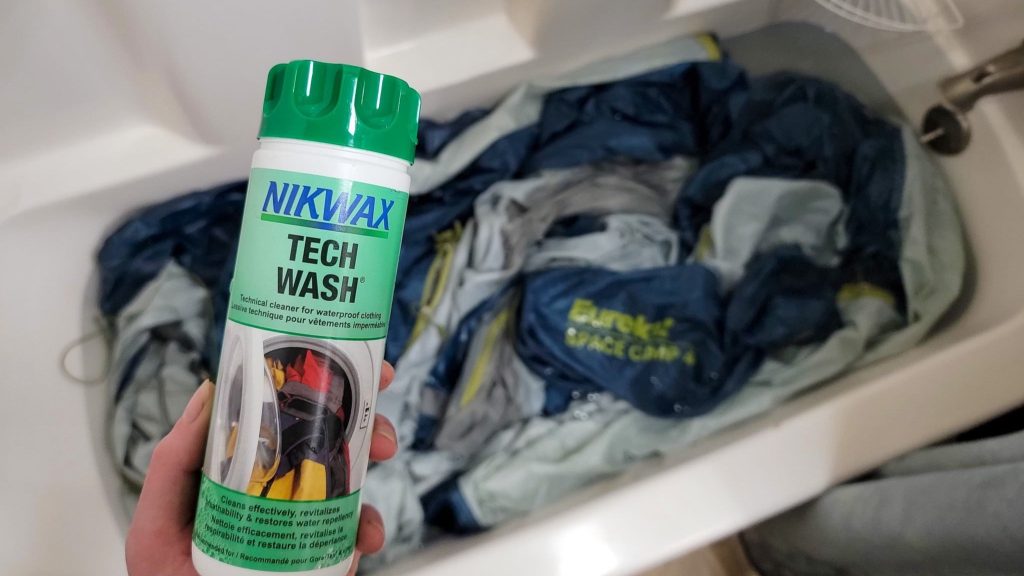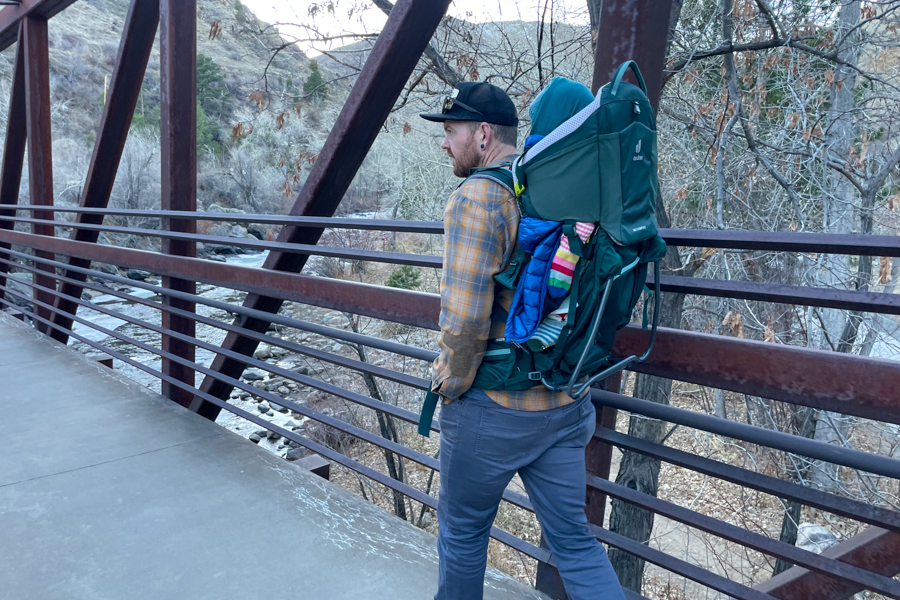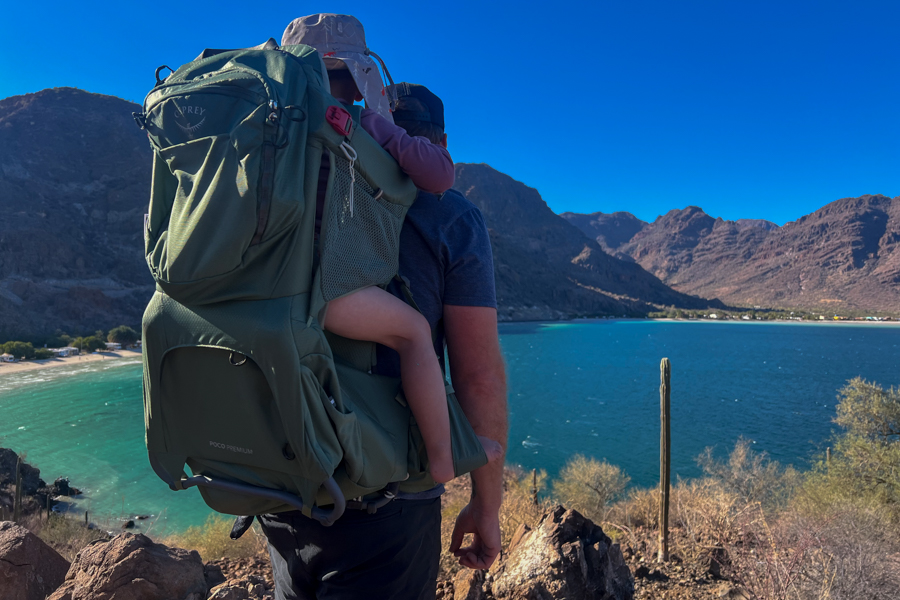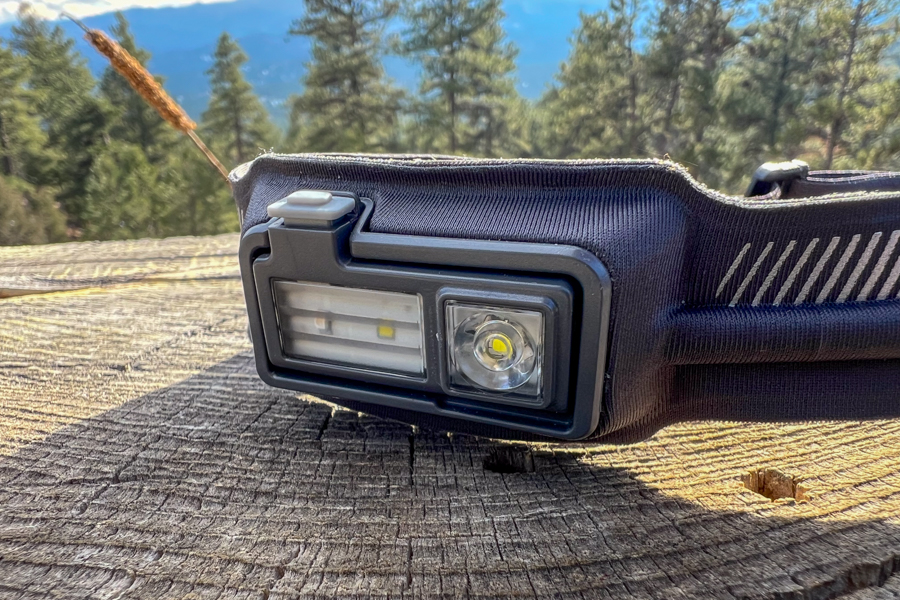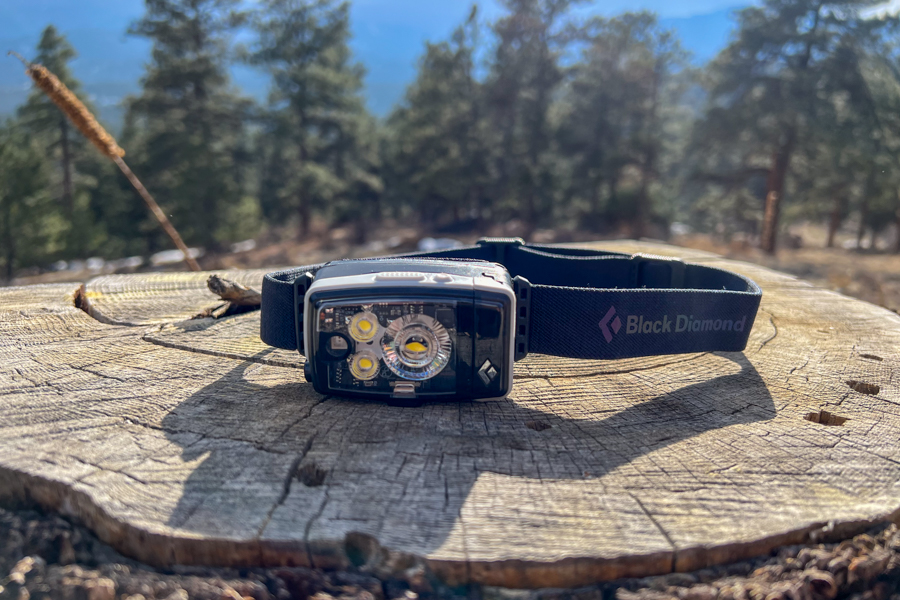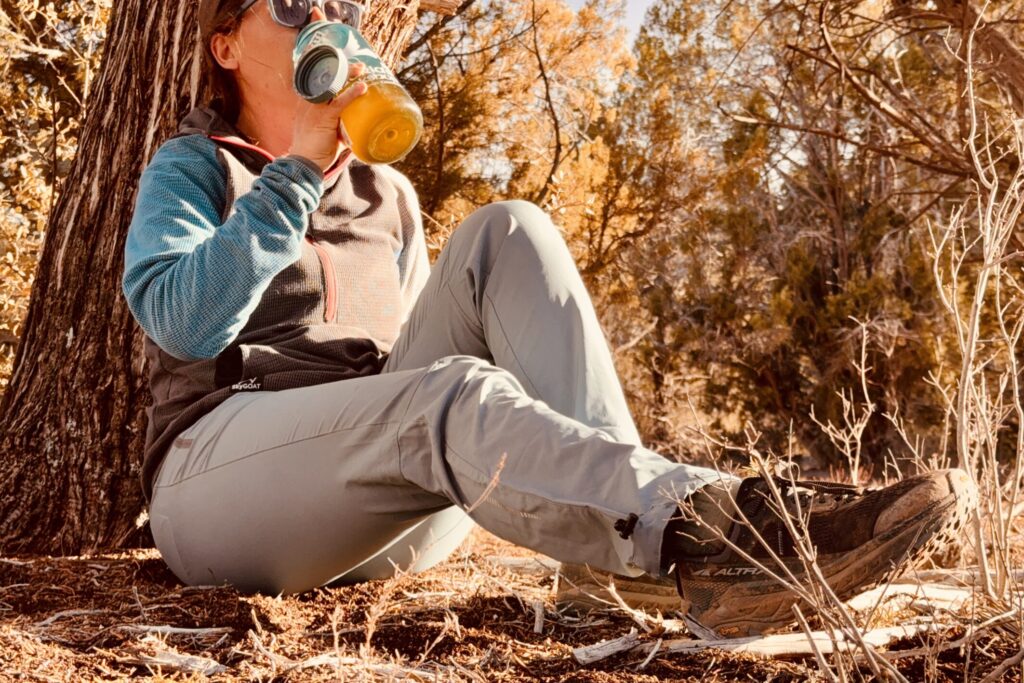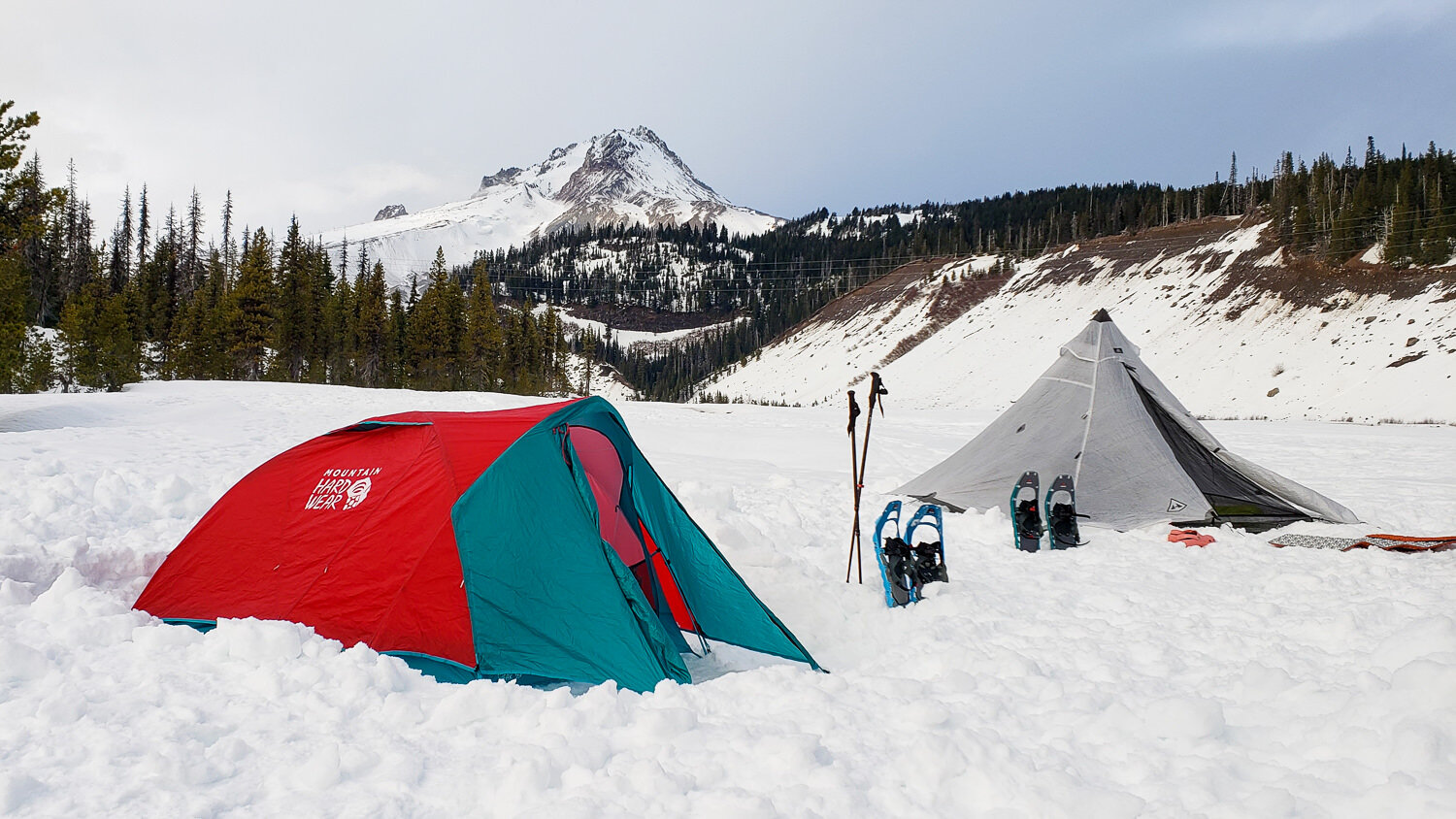
When you go into the backcountry during the harshest season of the year, it pays to have the right equipment to keep you safe, comfortable, and having fun. Whether you’re experienced, or you’ve never been winter camping before, working through a thorough checklist like the one below will give you peace of mind when preparing for an adventure. We hope it makes packing for your next winter camping trip quick and easy.
For recommendations on our favorite backpacking equipment for spring, summer, and fall trips, check out the CleverHiker Gear Guide and Top Picks page.
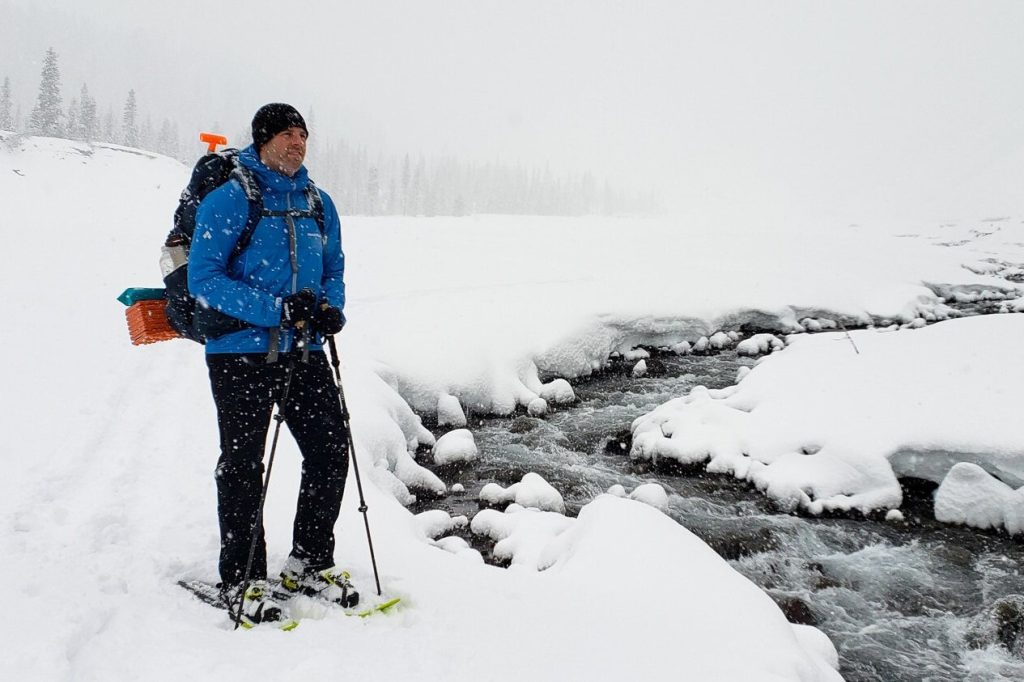
Winter Camping Checklist
You won’t need everything on this list for every winter trip, but it’s a good idea to think through each of the following items as you gather your gear so you don’t forget anything important.
Scroll down to see our recommendations and learn more about why these items are good for winter camping.
SHELTER
- Tent body
- Rainfly
- Tent poles or trekking poles
- Stakes + Guylines
Groundsheet for tent floor durability (optional)
CAMP KITCHEN
- Stove + fuel (cold-weather compatible)
- Cookpot + lid (bigger is better for groups or melting snow)
- Stove platform (or use the back of your shovel)
- Lighter
- Spoon
- Cup / mug (optional)
- Small quick-dry towel (optional)
- Spice kit (optional)
ENTERTAINMENT
NAVIGATION EQUIPMENT
- Topo map(s)
- Waterproof map case / Ziploc
- Compass
- GPS watch (optional)
- GPS phone app with maps downloaded or GPS
- Satellite Messenger / PLB (optional – for remote locations)
- Download driving directions for offline use (we use maps.me app)
- Photos of guidebook pages
- Check current weather before trip
- Call ranger station pre-trip for trail conditions + regulations
- Required permits
FIRST AID
(buying a first-aid kit is a good place to start)
- Band-aids of various sizes
- Antibiotic ointment
- Gauze pads
- Tape (we like KT or an Ace wrap)
- Latex gloves
- Tweezers / scissors
- Safety pins
- Moleskin
- Antihistamines
- Antidiarrheal
PERSONAL TOILETRIES
- Sunscreen
- Lip balm with SPF
- Hand sanitizer
- Toilet paper/wipes + sealable bag (to pack it out)
- Menstrual products
- Toothbrush + paste
- Floss
- Prescription Rx
- OTC meds. + vitamins
- Contact lenses + supplies/glasses
- Lotion (optional)
- Eye drops (optional)
- Small comb (optional)
- Hair ties (optional)
- Nail clipper (optional)
- Pre trip: Clip nails, cut hair, shave, etc.
FOOD
- Provisions – commonly between 2,500-3,500 calories per day (meals, snacks)
- Extra day’s supply of food (for emergencies)
- Butter, oil & condiments
- Coffee & drink mixes
- Food bag / Ursack (waterproof if hanging a bear bag)
- 50’ nylon cord + small carabiner for bear bag hanging (or) bear canister (where required)
- Liquor in a flask (optional)
BACKPACK & STORAGE
- Backpack
- Shoulder strap camera pocket (optional)
- Pack liner or waterproof stuff sacks (interior rain protection)
- Large Ziploc for garbage
SLEEP SYSTEM
- Warm sleeping bag or quilt
- Insulated sleeping pad
- Pad attachment straps (optional)
- Foam sleeping pad (boosts warmth, use as sit pad)
- Pump sack (optional)
- Pillow or stuff sack
SNOW GEAR
- Snowshoes or backcountry skis
- Trekking poles with snow baskets
- Snow shovel
- Sled (optional)
For technical terrain
TOOLS & ACCESSORIES
- Z-seat pad (optional)
- Pocket knife or multi-tool
- Phone (turn on low power/airplane mode)
- Waterproof phone case
- Camera + waterproof case or Ziploc
- Extra camera battery (optional)
- Headlamp (check batteries pre-trip)
- Lantern for group area
- Extra batteries for long trips
- Power bank + charging cords (optional)
- Assorted Ziploc bags
- Cash, ID, credit card, insurance card
EMERGENCY KIT
- Whistle
- Duct / Tenacious Tape (for repairs)
- Sleeping pad patch kit
- Super glue (optional)
- Needle + thread (optional)
- Fire starter (waterproof matches, rod & striker) + emergency tinder (cotton ball, dryer lint)
- Small backup lighter
- Backup water treatment pills (Chlorine Dioxide)
HYDRATION
- 1-2 Water bottles
- 1 Insulated water bottle
- Water treatment (filter, UV purifier, extra fuel to boil, etc.)
- Pre-filter for silty water treatment, ex: bandana (optional)
CLOTHING
- Waterproof jacket
- Down jacket (insulation)
- Midlayer top or fleece (optional)
- Base layer top
- Waterproof pants
- Hiking pants
- Down pants (optional)
- Base layers
- 1-2 Pairs gloves
- Fleece hat
- Sun hat for hiking (optional)
- 1-2 Pair underwear
- 3 Pair socks
- 2 Pair socks for hiking
- 1 Pair warm wool socks for camp
- Winter hiking boots or ski boots
- Snow gaiters (optional)
- Down booties (optional)
- Sunglasses or goggles
PACK IN CAR
- Parking pass for car
- Dry clothes + shoes to change into
- Camp towel
- Water + snacks
- 2 itineraries: 1 left with friend + 1 under car seat (free printable template)
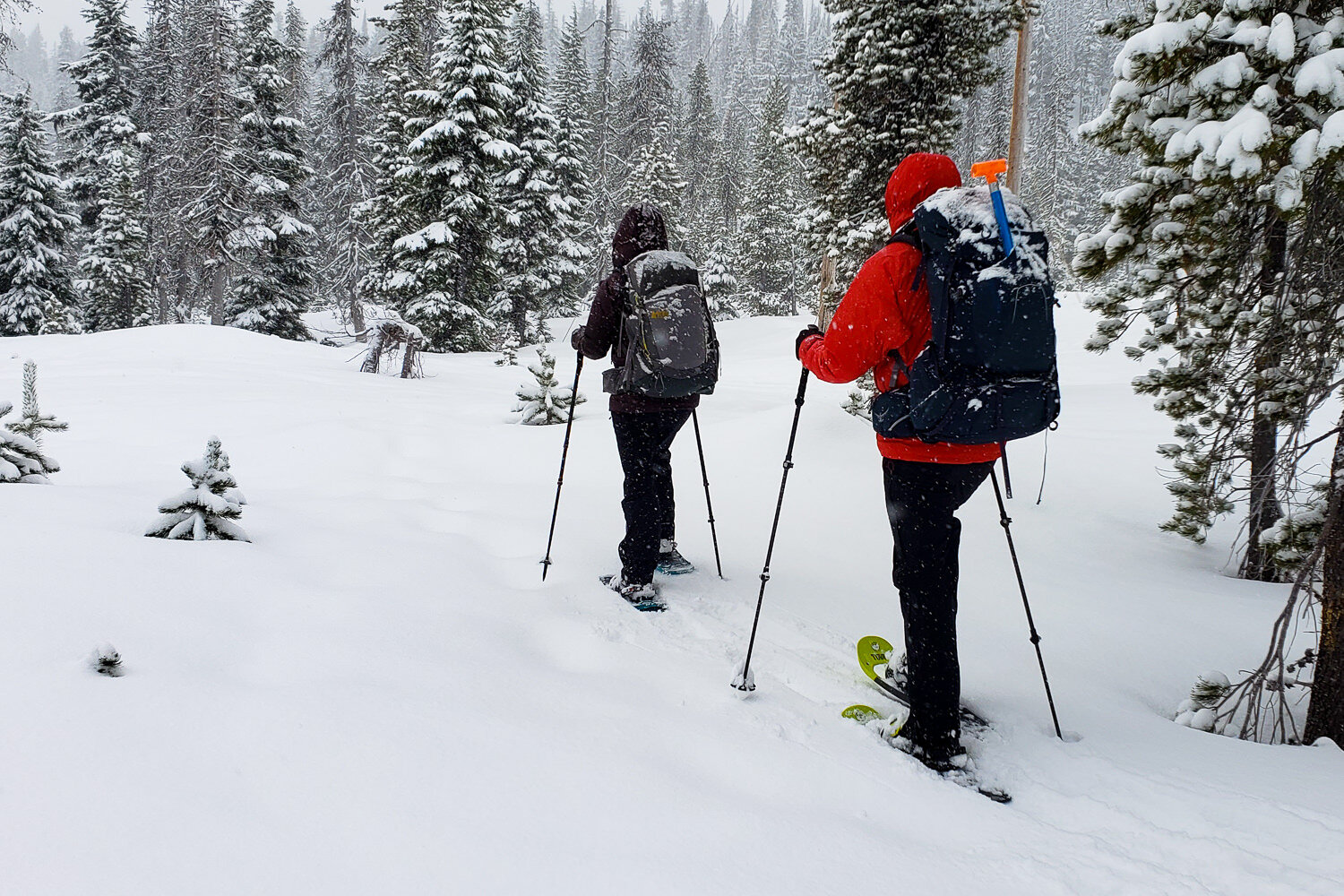
Winter Camping Gear Recommendations
TENT – We use the NEMO Kunai 2 and Mountain Hardwear Outpost 2 / Trango 2 for most of our winter camping trips. They have a great balance of weight, strength, and weather protection. See how they compare on our Best 4-Season Tents list. If you’re looking for an ultralight tent that can be used year-round, the Hyperlite Mountain Gear Ultamid 2 is also a solid option. We love its combination of low weight and livability and that’s why it’s one of our top picks on our Best Ultralight Tents list
TENT STAKES – Regular stakes tend to pull out when they’re placed in the snow the same way you’d stick them in the ground. Bury them sideways (aka deadman-style) and pack snow over them for a much more secure hold. You could also upgrade to wide snow stakes if you prefer.
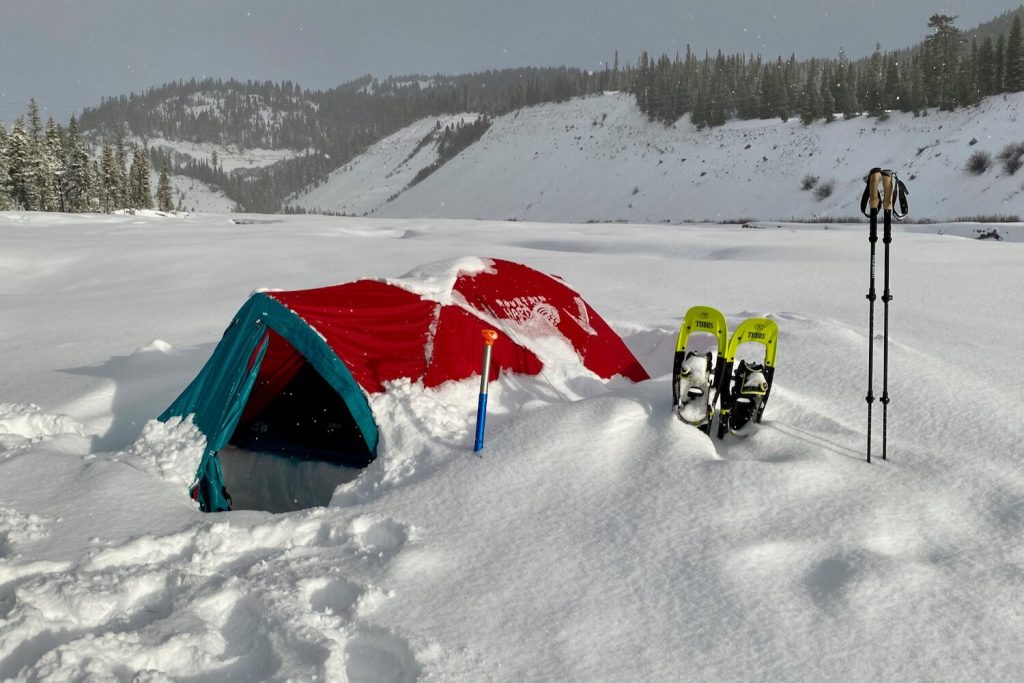
BACKPACK – Winter camping requires a bit more gear than 3-season backpacking, so we prefer backpacks that have solid frames and a bit more capacity to comfortably support a heavy load. If you’re looking to save some weight, the HMG Southwest 3400 is number one on our list of the Best Backpacking Backpacks and is durable, spacious, and nearly waterproof. For heavier loads, a backpack like the Osprey Atmos 65 AG (Men’s sizes) and Aura AG 65 (Women’s sizes) will have more support.
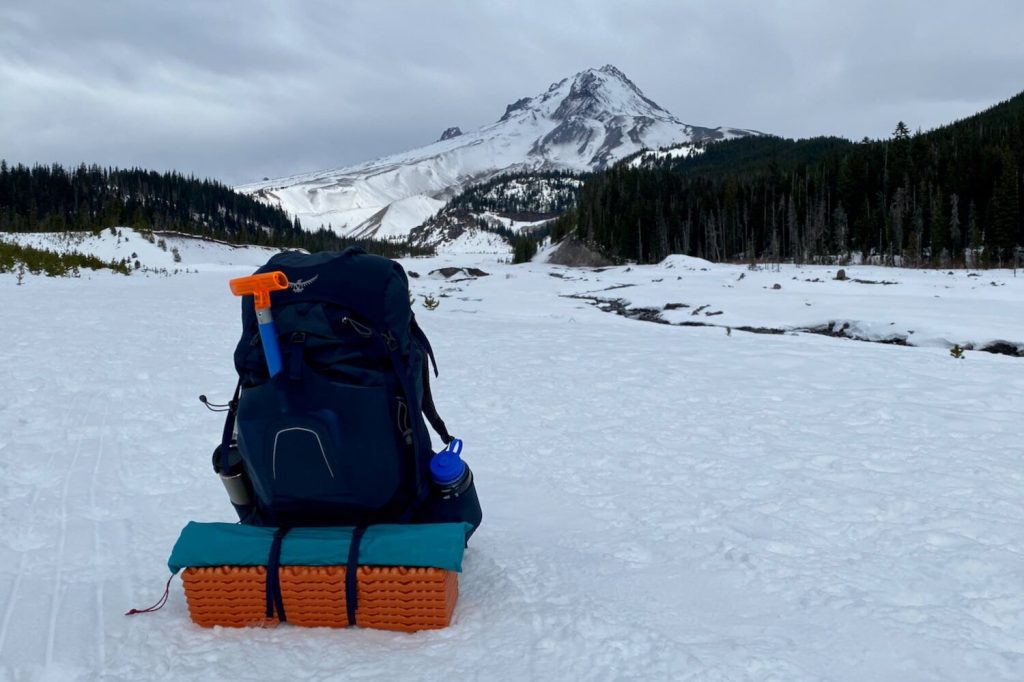
SLEEPING BAG – We use the Western Mountaineering Versalite 10F and REI Co-op Magma 15 for winter trips. Both are lightweight, incredibly warm, and make our list of the Best Sleeping Bags.
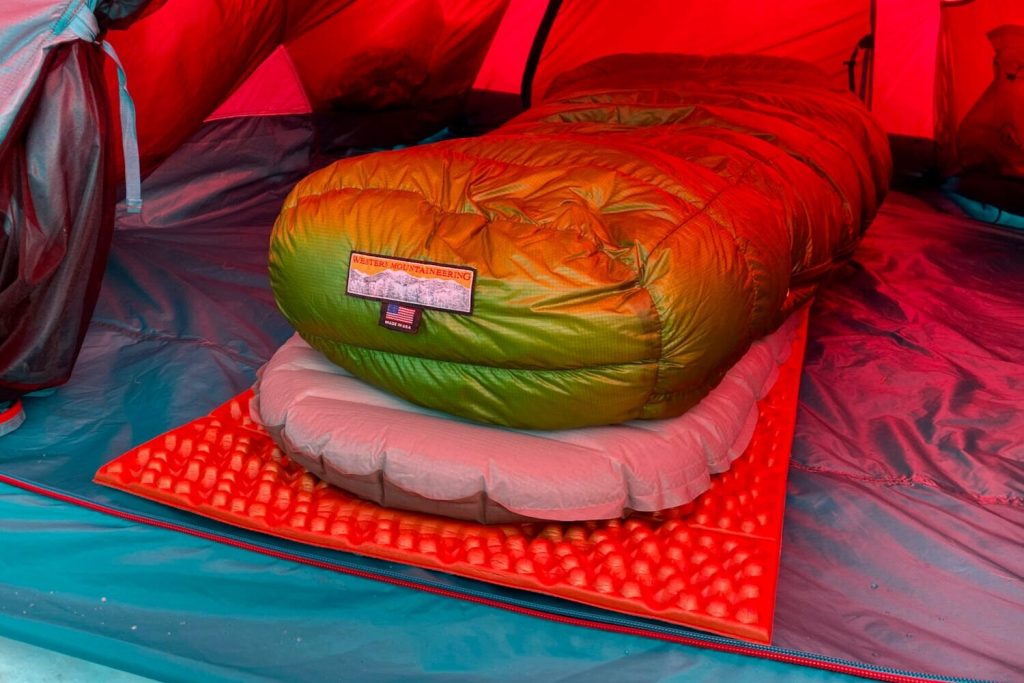
SLEEPING PAD – The Therm-a-Rest NeoAir XTherm is the best sleeping pad we’ve found for winter trips, because it’s lightweight, comfortable, and warm. Check out our list of the Best Sleeping Pads and our full review of the XTherm to see how it compares to other pads. We like to use a closed-cell foam pad, like the NEMO Switchback, under our air pad to add warmth. We also sit and stand on a foam pad whenever we’re on breaks or inactive at camp during snowy trips.
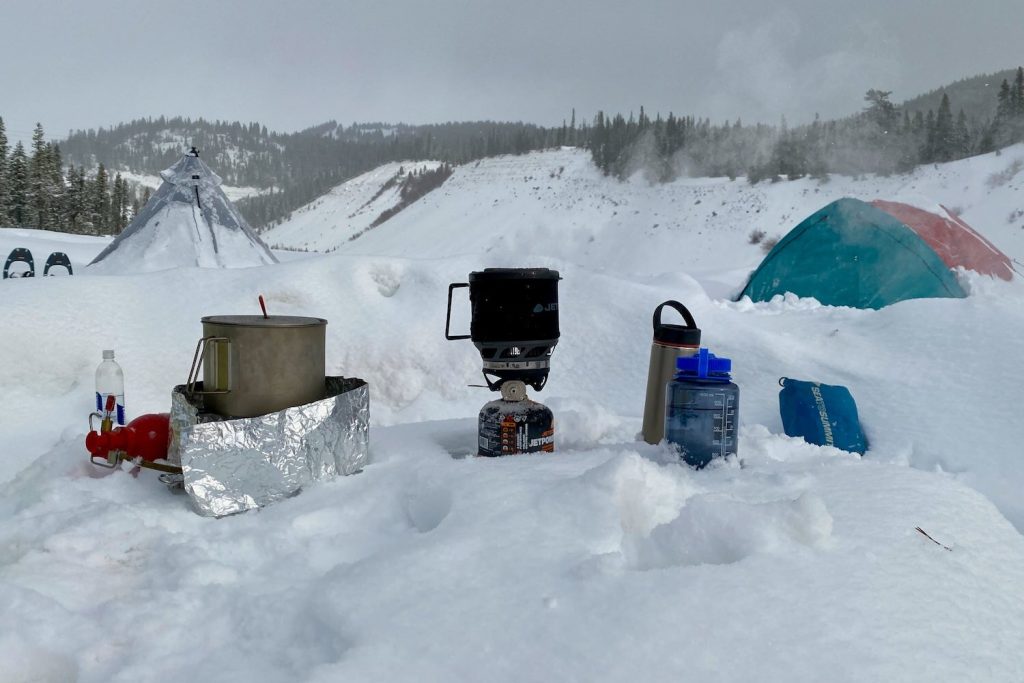
COOKING SYSTEM – Not all backpacking stoves perform well in winter conditions, but the MSR Whisperlite is a classic liquid-fuel stove that works well in any weather. It utilizes affordable white gas for boiling lots of water for a group. The Jetboil MiniMo cooking system has a regulator and it’s performed well for us in mild winter conditions. It’s super fast, easy to fire up with gloves on, and it has excellent simmer control. If you use a canister stove, keep the fuel in your jacket to warm it up before you cook. Both stoves make our Best Backpacking Stoves list.
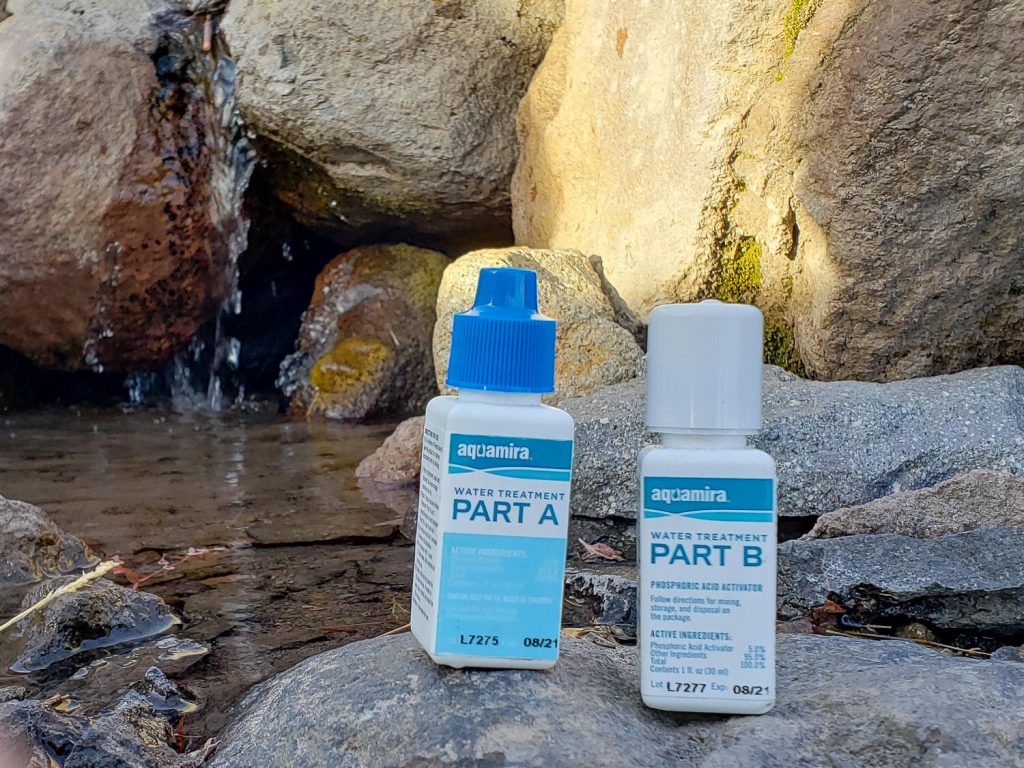
WATER PURIFIER – If running water is available in a nearby creek, we use chlorine dioxide drops or pills on winter trips. They’re lightweight, inexpensive, and they work fast. If no running water is available, we melt and boil snow with a camp stove.
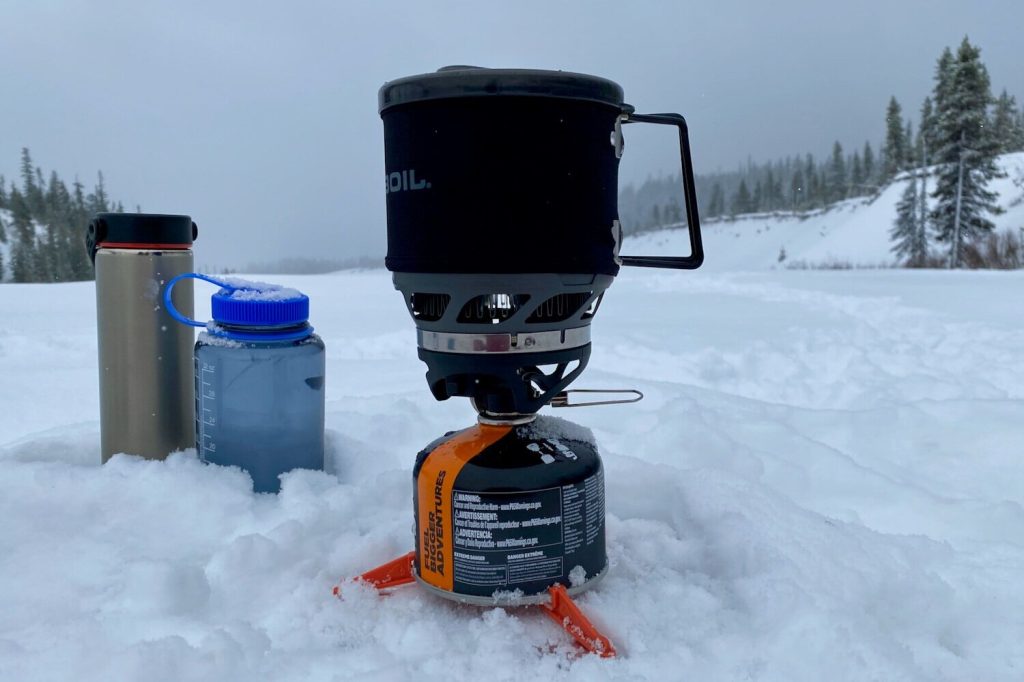
WATER BOTTLES – A heat-resistant, BPA-free plastic water bottle with a screw-top lid can double as a space heater for your sleeping bag on winter camping trips if you fill it with hot water. Just make sure you thoroughly test the lid for leaks before you get it anywhere near your dry sleeping bag. You may also want to consider bringing an insulated water bottle, like the Lightweight Hydro Flask, so you can sip hot drinks throughout the day to stay warm.
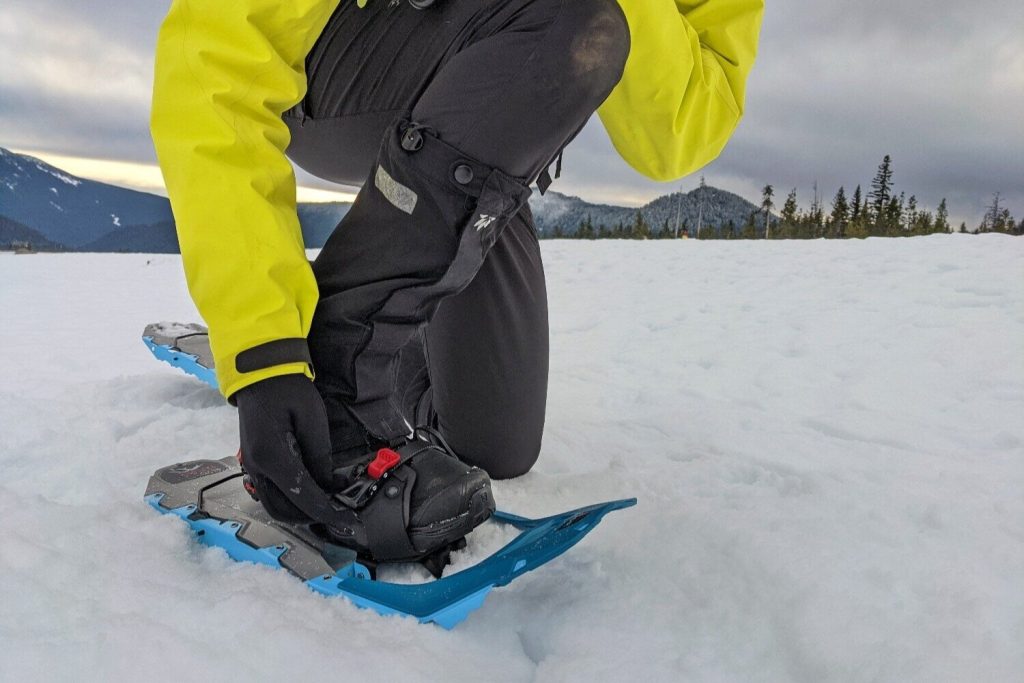
SHOES OR BOOTS – Waterproof winter boots are great for snowy trips because they’re compatible with snowshoes and they keep your feet warm, dry, and comfortable. Just remember, it’s important to break your boots in before trips to avoid blisters. Salomon’s X Ultra Mid Winter are our top pick from our Best Winter Boots guide for their excellent traction, durability, and comfort. If your feet tend to get cold at night, get yourself a pair of down booties. They’re a seriously-worthwhile luxury item for around camp and in your sleeping bag.
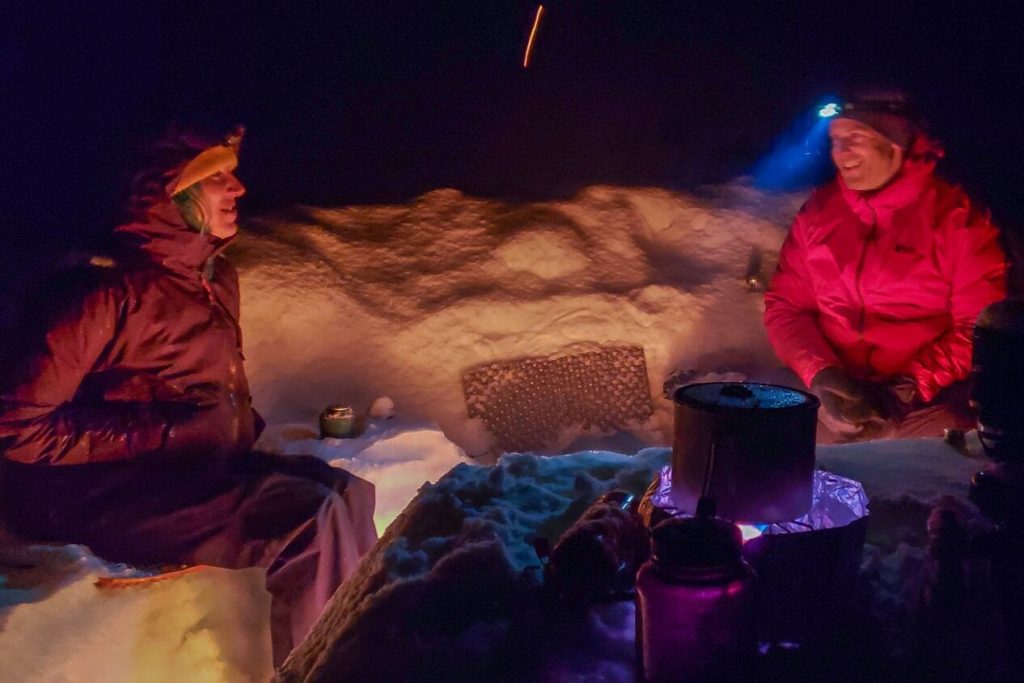
HEADLAMP – Having a reliable headlamp is really important on winter trips, since daylight hours are short and you’ll need plenty of light for evening activities and camp duties after sunset. We like the Fenix HM50R V2.0 from our Best Headlamps list for winter trips since it’s very bright, easy to operate with gloved hands, and it performs well in the cold.
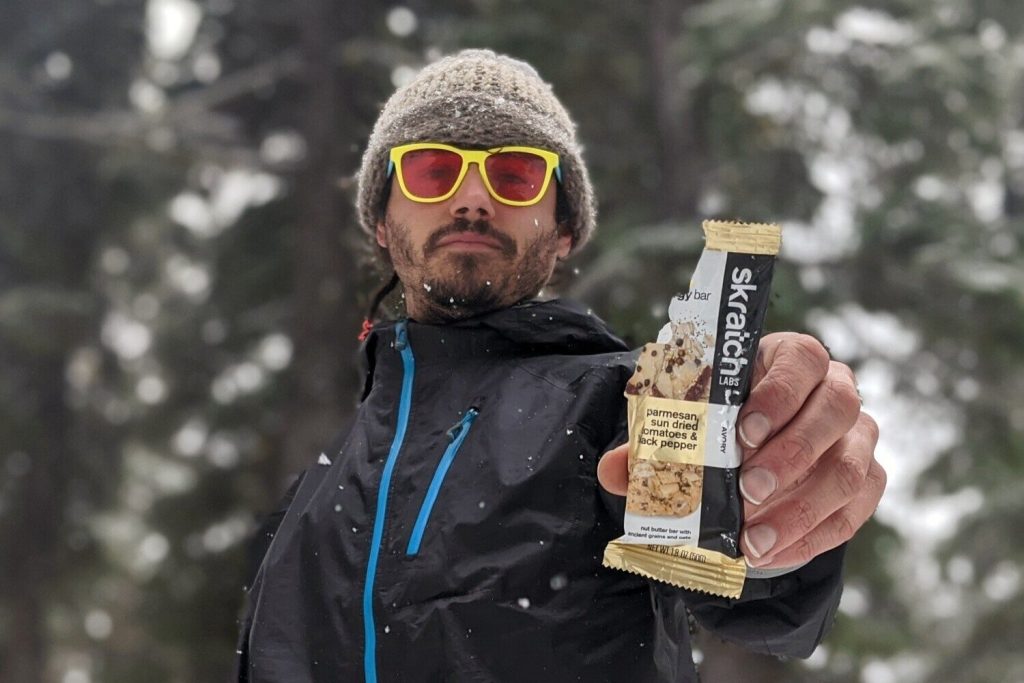
FOOD – You’ll burn a lot of calories while winter camping, so you’ll need plenty of snacks and delicious hot meals to stay fueled and to make chilly trips more enjoyable. For some suggestions on what to bring, check out our food page where we cover the Best Freeze Dried Meals, Energy Bars, Backpacking Meal Recipes, and more.
FOOD STORAGE – For most winter trips, we bring an Ursack to keep the critters out of our food. Whether or not there are food storage requirements or bears in the area you’ll be camping in, it will give you peace of mind to know that you’re storing your food properly. Bear canisters and Ursacks are easy to use and are the most effective storage methods.
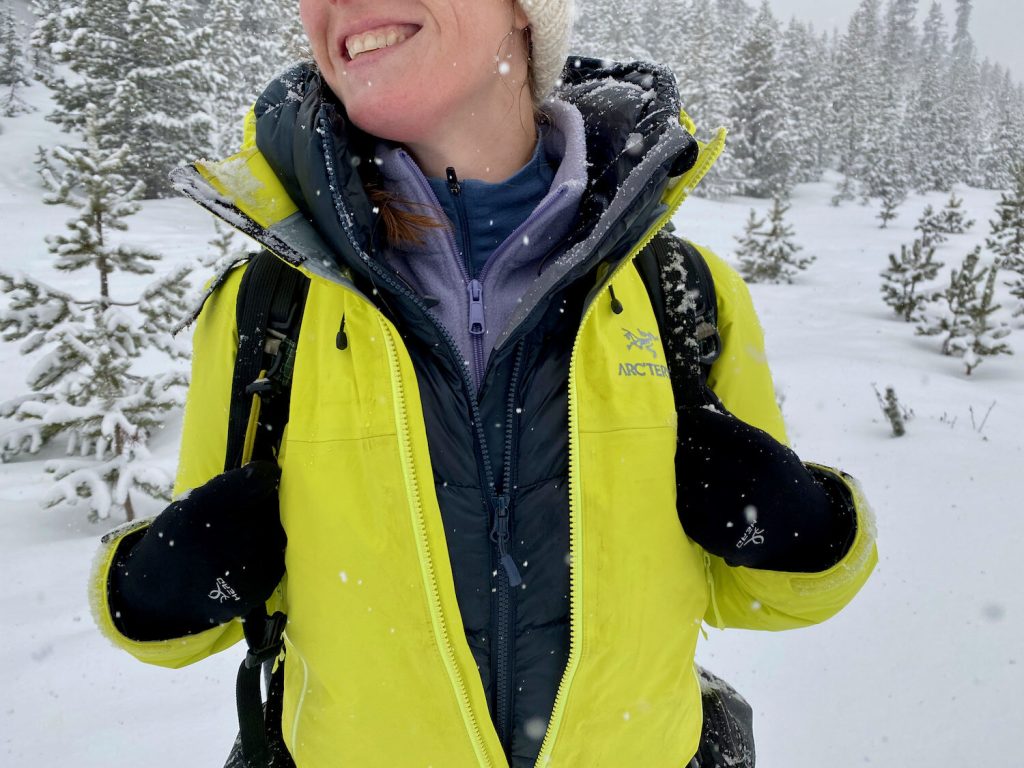
CLOTHING – Having clothing that performs well in damp, cold conditions is critical on winter camping trips. Here are some of our favorite winter-specific clothing items:
- Rain jacket – Arc’teryx Beta AR (Men’s & Women’s)
- Rain pants – Mountain Hardwear Stretch Ozonic Rain Pants (Men’s & Women’s)
- Down jacket – Rab Neutrino Pro Jacket (Men’s & Women’s)
- Fleece jacket (Extra warmth under your down or rain jacket) – Columbia Full-Zip Fleece (Men’s & Women’s)
- Hiking pants – Outdoor Research Ferrosi Pants (Men’s) / Patagonia Quandary (Women’s)
- Base layer top & bottom
- Underwear – ExOfficio Give-N-Go (Men’s & Women’s)
- Hiking socks – Darn Tough Micro Crew Cushion (Men’s and Women’s)
- Warm sleep socks – Darn Tough Boot Full Cushion (Men’s and Women’s)
- Gloves – 1 pair wind / waterproof and 1 pair liners (we recommend bringing 2 pairs for winter camping trips – 1 to wear while you’re active and 1 to wear in camp)
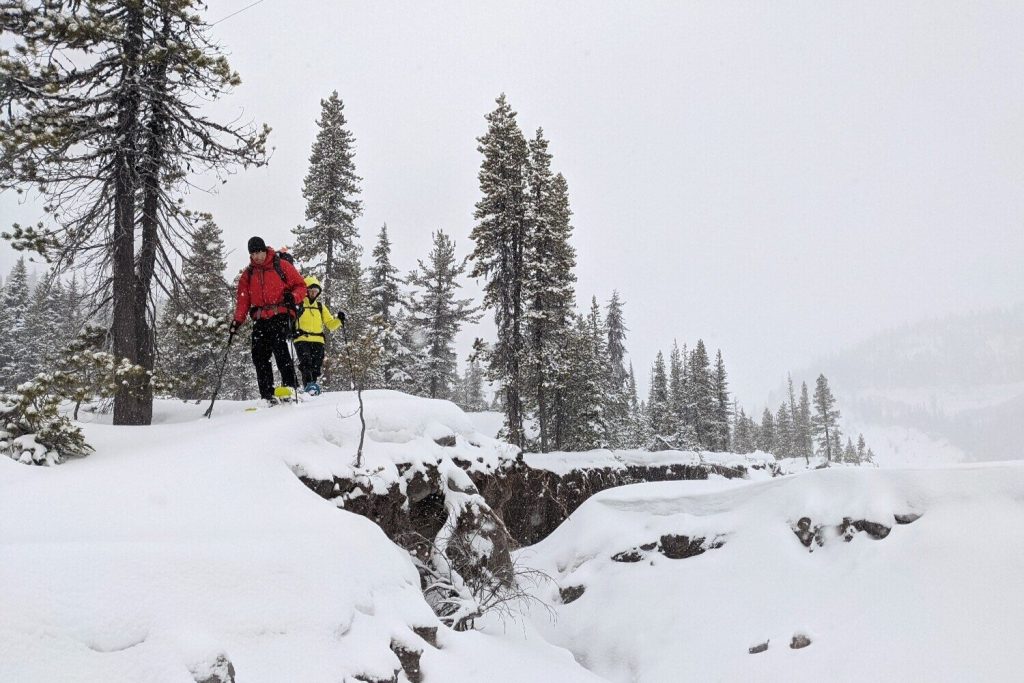
MAP & COMPASS – Navigating in the snow can be difficult when there aren’t many landmarks to keep an eye on. We like to use a combination of detailed maps, a compass, and GPS / phone app.
FIRST AID KIT – Always bring a small personalized first-aid kit. We used the .7 Ultralight Kit with added extras, like painkillers and personal medications.
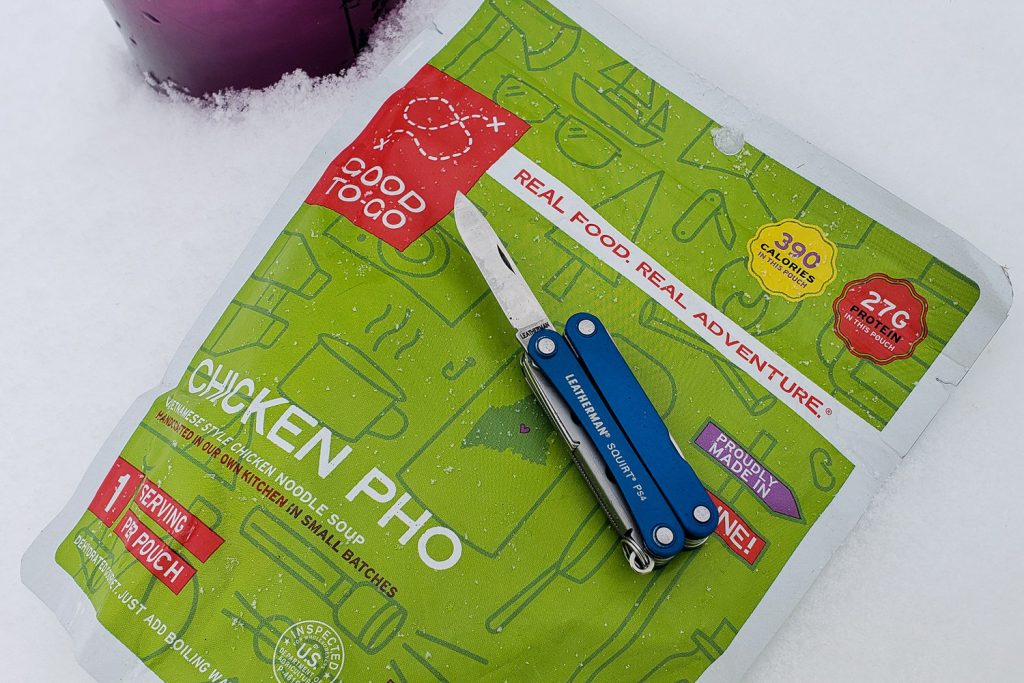
POCKET KNIFE – We carry a lightweight pocket knife with a decent-size blade whenever we plan to do any major cooking on winter trips. A small multitool can also come in handy for opening food packages, doing first aid, and for unexpected fixes on winter camping trips.
CAMERA – The Sony RX100 is our go-to point-and-shoot camera. Modern cell phone cameras are also super convenient and have shockingly good image quality for backcountry trips.
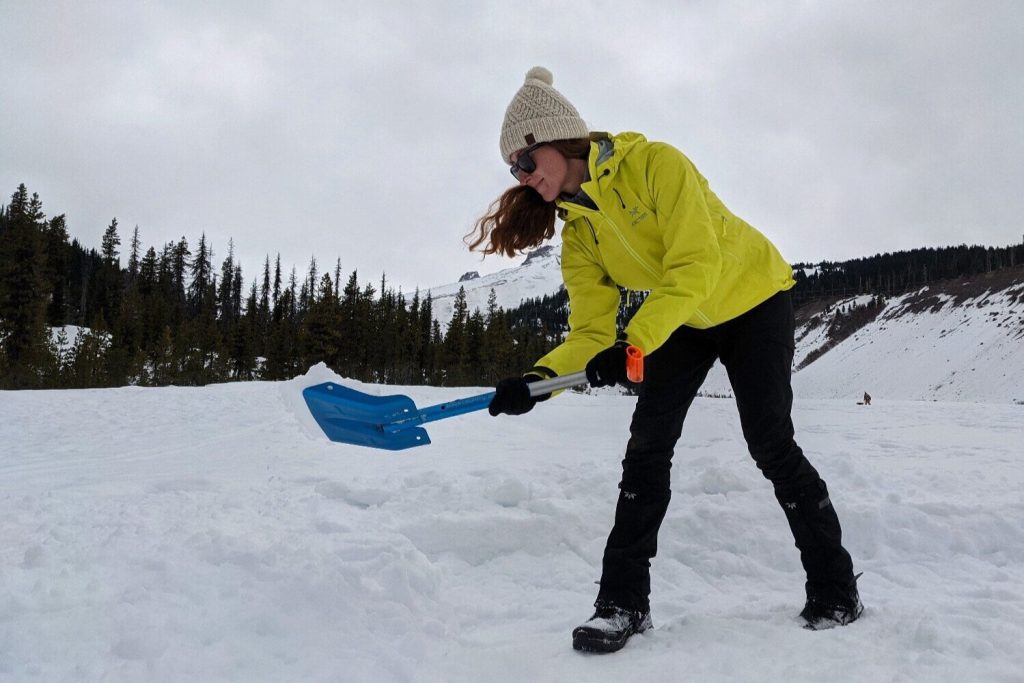
SNOW SHOVEL – A snow shovel is excellent for all your winter camping snow-scaping needs. We like the Backcountry Access Dozer since it’s lightweight, has an extendable handle, and it has a flat top edge so you can easily kick it through hard-packed snow.
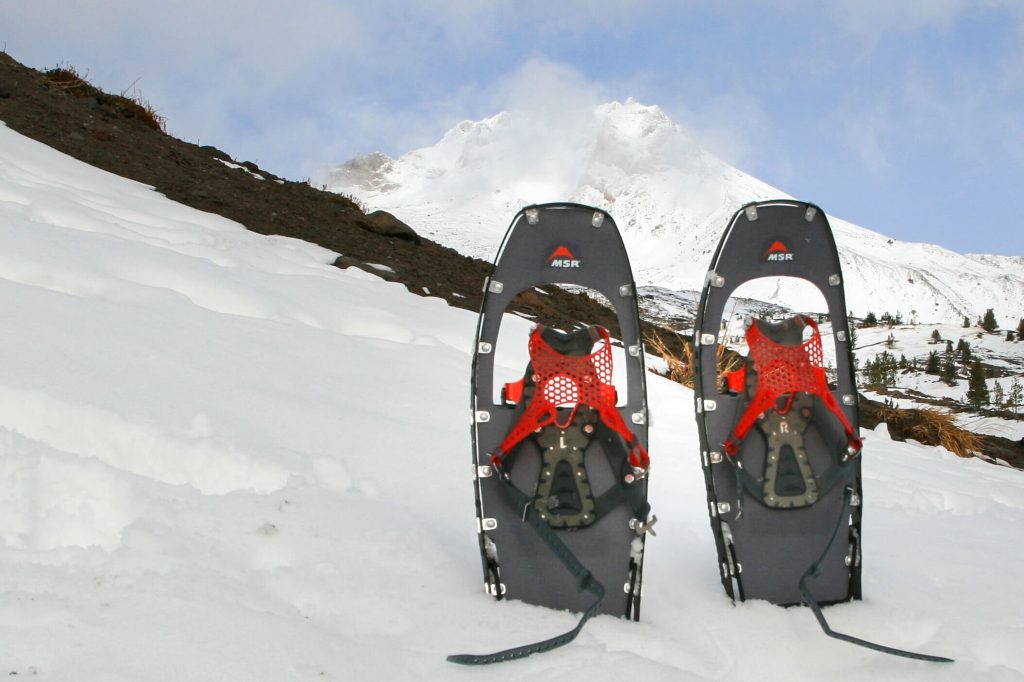
SNOWSHOES – Snowshoes can make or break a winter camping trip, so make sure to choose a quality pair that fit your feet right. For the best experience, match your snowshoes to the type of terrain and snow conditions you’ll be encountering. The MSR Lightning Ascent snowshoes are our favorite overall for their flotation, traction, and comfort. Check out all of our recommendations on our Best Snowshoes Gear Guide to find the perfect pair for you.
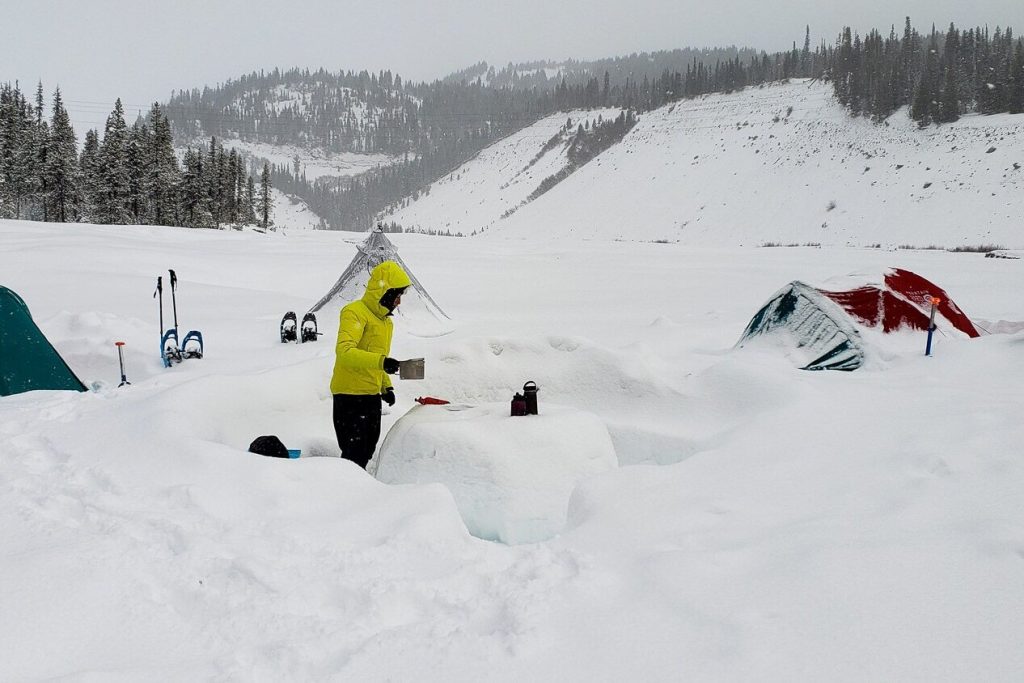
More on Winter Camping
We hope this checklist has you pumped for your next winter adventure! If you want to learn more, head over to our 15 Winter Camping Tips page.
You might also like the following winter-related content:
- Best Winter Coats / Best Women’s Winter Coats
- Best Winter Boots / Best Women’s Winter Boots
- Best Snowshoes
- Best Trekking Poles
- Crossing Snow – Ice Axe Self-Arrest HD Tutorial Video
- Backpacking & Hiking Clothing 101: Tips for Creating the Perfect Ultralight Clothing System
- CleverHiker Food Guide – Backpacking Food 101, Best Freeze Dried Meals, DIY Meal Recipes, & more!

